The most common type of pathology of the spine – the lumbar spine osteocondrose. A large percentage of the people who are suffering from degenerative disc disease for the lumbar spine reaches its old age, even after 30 years of age. The disease is caused by degeneration, the tissue of the cartilage of the vertebral column and the intervertebral disc. The disease is characterized by the strong attacks of pain in the department of the waist.
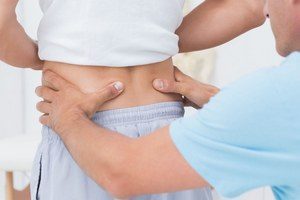
The causes of degenerative disc disease lumbar spine
There are different reasons for which the disease is acquired, many, many times, refer to the following:
- low-intensity physical activity;
- diseases of the thyroid gland, cardiovascular system, gastro-INTESTINAL;
- the high levels of physical exertion, weight-lifting;
- a disease of the joints in the spine, in particular, have rheumatoid arthritis
- injury case;
- flat feet ;
- insect injuries, especially related to the lumbar spine, and cross-department;
- it is not the correct the metabolism;
- the degeneration of the spinal cord, is associated with changes related to age.
At the risk of the disease for the lumbar spine osteochondrosis includes:
- they have a curvature of the spine;
- the obese, the disturbance of the metabolism;
- a long time in a folded position;
- have a hereditary predisposition;
- they are in an environment of increased stress;
- have a sleep, a little rest,
- to expose the body hypothermia;
- they are the representatives of such occupations as janitors, the builders, the drivers, as well as having expertise related to a constant, to be near a computer.
The symptoms of degenerative disc disease lumbar spine
In addition to the pain that they are experiencing bad osteochondrosis lumbar spine, especially during a period of heavy loads, and also to distinguish between other symptoms of the disease, which is manifested in the following:
- the dull pain, changes in the focus of inflammation in the lower leg;
- the gain from the starting point of the pain syndrome, and when it got heavy, so a change in body position, coughing, sneezing;
- when you stay in the same position, the blood will accumulate in the heart, and the one with the smallest attempt at change in attitudes occurs, acute pain;
- the constant stress and spinal muscles;
- appearances to the lumbar region of the lower forum;
- paresthesia femoral, gluteal muscles, and leg and foot;
- the feeling of "pins and needles" in your legs;
- the spasm of the artery of the measurement in the absence of a pulse;
- the pathology of the sweat glands;
- the drying out of the skin in the area of the home, and the pain of the violation of the sensitivity.
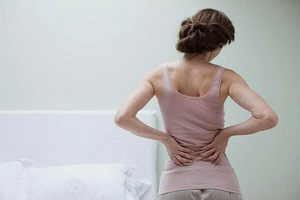
The main signs and symptoms of degenerative disc disease for the lumbar spine in women
Osteocondrose of the lumbar spine – is a common disorder characterized by dystrophy, intervertebral disc. With the passage of time, and also the charges to be excessive, they will be gradually erased, it will become smooth. It is packed with a disabled engine, and the occurrence of the unpleasant sensations due to samishisa the vertebrae that press on the nerve roots, and vessels. Recognizing the symptoms of degenerative disc disease for the lumbar spine in women, and signs of a possible by means of the proposed suggestions.
Lower back osteocondrose — causes, treatment, diagnosis
The lumbar spine is the portion of the spinal column, which represents the peak load during jumping, running, walking, seating, a distributor of power sports and in other situations. The lumbar spine is made up of five vertebrae between the sacrum and the mother of the u.s. department of the vertebral column. When the injury to the lumbar spine when heavy loads on the lumbar spine that occurs with the deformation of the intervertebral disc, damage to the fibrous rings of recognizing the intervertebral disc, biochemical changes in the tissue of the cartilage, impairment of the circulation of the blood. When the rupture of the fibrous ring occurs with a bulging of the intervertebral disc, and the development of intervertebral hernia is.

Osteocondrose the lumbar spine is a serious condition, accompanied by pain that spreads to the leg, the pain in the lumbar region, and the development of complications. In a neuro class, Usupovskiy of the hospital, the patient can get the advice of an expert doctor-the neurologist, to go through a diagnosis to find out the cause of the development of the disease, get a treatment and undergo a rehabilitation. In the department of neurology, dealing with the treatment of auto-immune diseases, circulatory disorders of the brain, chronic pain, and the effects of the injury, brain injury, age-related diseases.
Osteocondrose lower back symptoms
The main symptom is when you osteocondrose refers to pain. The patient quickly, if you're tired of it, it is often a pain in the head, are concerned with the lack of sleep, and increased irritability. With the development of the disease appear to symptoms of a negative on the part of the urinary system, can increase the sensitivity of the feet, the skin in the end, it becomes dry, and frequently, they arise from muscle spasms, pain, and the episode is disrupted, the body.
Osteocondrose the lumbar spine characterized by a deformation of the intervertebral disc, and their ways, benefit, travel, and the coracoid to the expansion of the vertebrae. With the development of the disease, degenerative disc disease of the lumbar disc occurs with the loss of flexibility of the spinal column, being annoyed niinivaarantie endings in the nerve, the sacral nerve endings that make up the sciatic nerve. Develops as a complication of sciatica. For the sake of the development of sciatica it is a tightening of the nerve root in the lumbar spine, the deformation of the intervertebral disc, displacement, and the coracoid expansion of the vertebrae of the spine the herniation. The sciatica is accompanied with severe pain, a decrease in the quality of life of the patient.
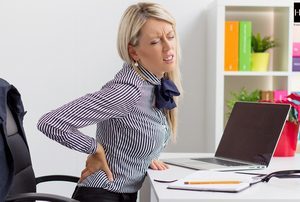
With the development of the degenerative disease of the disc will appear on the following conditions:
- the pain is caused.
- the root of the disorder.
- the ischemic syndrome.
- of the spine syndrome
The opinion of an expert
The amount of uptake of the options with your doctor and degenerative diseases-degenerative diseases of the vertebral column they occupy in the first place. According to the statistics, in 60 to 80 % of the cases of aggravation of degenerative disc disease leads to the development of temporary or permanent disability. In the framework of the disability on the part of degenerative diseases-degenerative diseases are responsible for 20 % of the time. Lower back osteocondrose the most common one is the localization of the pathological process. The medical evidence suggests that the involvement of the disease have a 60 to 70 % of the time.
The diagnosis of the disease in the hospital, occurs with a radiographic examination, magnetic resonance imaging, and computed tomography. Osteocondrose is a dangerous complication. In severe cases, loss of the capacity for self-care. For this reason, it is important to consult with a medical doctor to carry out a survey, and the target of the treatment. Depending on the stage of degenerative diseases-degenerative diseases in the lumbar region, the process of the vertebrae, the physicians at the hospital to develop an individual therapeutic plan. It includes both tools that there is a causal, pathogenetic and symptomatic therapy. In addition to this, the treatment plan will include recommendations for the prevention of the recurrence of the disease.
Osteocondrose of the lumbar spine: treatment
Treatment of degenerative disc disease of the lumbar disc depends on the neglect of the disease. When osteocondrose highlight the different stages of development of the pathology:
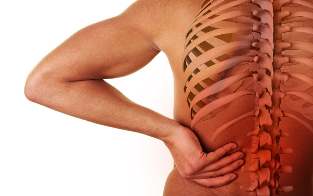
- lead the development of the disease, the fibrous ring around the intervertebral disc, the disc has a crack, which are filled in with the content, don't suffer from the kernel. The disks at this stage in the development of the disease, the deformed, weak, worried about the pain, and it can be a pain in the heart. Occurs, the pain in your back as you lift the weights, and the razor-sharp move. The pain may be steady or sudden, a sudden.
- the process of the deformation of the intervertebral disc remains. It occurs a crushing of the nerve endings, and reduces the space between the vertebrae, it appears, expressed the discomfort in the lower back, often come with the pain of the attacks by unpleasant sensations in the lumbar region and the sacrum.
- in the third stage of development of degenerative disc disease for the lumbar spine, is characterized by a break in the fibrous rings around the intervertebral disc, by squeezing the soft kernel, which is a tightening of the nerve roots, and vessels – it develops the intervertebral disc is a laparoscopic cholecystectomy. The patient and the stage of development of the disease, a series of violations in the work of the internal organs, it becomes slouching.
- the fourth level of the disease in a serious condition at that stage. Is a deformity of the spine that leads to disability.
The severe degree of the disease, often requiring surgical treatment because of a deformity of the spinal column. The spinal column is deformed bone-growth, and the patient has no motor, broken down to activity. The women and the men, the progression of the disease leads to disruption in the functioning of the urinary system: the male has disrupted the power, in women, during pregnancy, there is a deformation of the intervertebral disc, are built in to the sex organs.
Vascular-compression, ischemia,
The violation of the blood supply to the spinal cord and in the more peripheral structures, resulting in a "fine-tuned" to the structure of the intervertebral disc and result in an abnormal way, the mobility of the spinal column, education, bone spurs and a neoarthrosis.
Compressive myelopathy
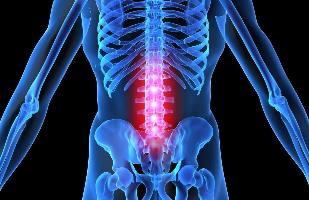
The narrowing of the spinal canal, causing periodic, paroxysmal weakness in the limbs, painful "cross" syndrome-belt-with impact on the back of the thigh. In the midst of this, there is under-nutrition/low calf/gluteal muscles, the extinction of plant records and Achilles reflexes, paresis of the leg.
In the treatment of degenerative disc disease lumbar spine
For a cure to a disease, it is both possible and necessary. Of course, in this case, it's going to help out just a treatment, it is focused on the reduction of symptoms of autoimmune disease, and the recovery of the structure of the spine, and the prevention of the recurrence of the problem.
The therapy of this disease, includes the following:
- Receiving drug money.
- The siege of the injection.
- Fitness and therapy for a year.
- Massage and manual therapy.
- Physical therapy.
Drugs, low back osteocondrose
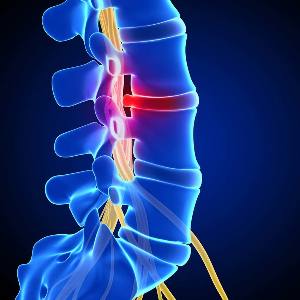
- The pain killers.
- Repair chondroprotectors.
- Vitamins. Great group-B.
- The shot was given. For the anesthetic, the recovery of the tissue from the cartilage, and of the normalizers of the micro-circulation of the blood.
- The media sites.
Gym when osteocondrose of the lumbar spine
The one sv is important for the recovery of the spinal cord. All of the procedures that are developed, individually, to get to the starting point of the pain syndrome, and muscle spasm, normalization of the circulation of the blood, and the recovery of the intervertebral disc.
Massage osteocondrose the lumbar spine
Massage required an integrated treatment of the disease. It can help, how to relax, and then train the muscle in the lower part of the back, it also induces the process of recovery of the tissue from the cartilage and relieves the pain. This is particularly true when it is above that of the disease, the therapeutic use of the map of the hardware-cupping-vacuum-and felt, weaving and massage.
Physical therapy
Usually, physical therapy is assigned to the patient osteochondrosis of the lumbar spine, only in the remission stage of the disease, and then experience a period of worsening of the problems. Classical and modern techniques.

- Etc. The special effects of the needles in the acupuncture points on the back.
- From the draw. Classically, the technique of traction of the spine in the garage, and pulling a sofa, and produced the qualified to this was a health care professional.
- In the gel electrophoresis. Well-known since the early 60's, and built the non-operational method of the impact of the external type, of problem hit.
- Pull the current one. Stop the stretching of the spinal column, in particular, in the complex the doctor's.
- Shock to to participate in the therapy. The use of infra-sonic waves, for the treatment of degenerative disc disease.
- And osteopathy. An integrated technique that combines elements of chiropractic, massage therapy and the healing of orthopedic.
- Magnetopuncture. A direct impact on the variables of the magnetic field in the core.
- The Laser the punch. The processing of the acupuncture points of the beam of electrons is induced by electromagnetic radiation.
- The electro-stimulation. The application of a small variable current into the affected area.
In the prevention of degenerative disc disease lumbar spine
After a treatment, and integrated physical therapy, physical therapy for a long period of time is the time required for maintenance therapy: in a certain period of time the spine is still fragile, and in need of support. In addition to this, the pre-emption is designed to prevent the onset of degenerative disc disease for the lumbar spine. The main activities are:
- A Regular and well-balanced diet, physical exercise, preferably under the supervision of a qualified personnel for an orthopaedic surgeon.
- The normalization of the mass of the body, often the aggravating circumstances is a factor that influences the formation of degenerative disc disease, it is exactly the excess weight of a person.
- The correction of the diet. In a regular diet should include foods that are rich in these elements, such as calcium and magnesium. You should exclude too fat and negative plates, and the other meal which is not subject to the definition of healthy food.
- The refusal of bad habits. Alcohol and tobacco, enhancing it all the destruction process in the body, such as, for example, the case of the reports of degenerative disc disease.
- The correct posture. Be sure to watch your posture, especially if your work is connected with constant sitting close to a computer or other seated activity. Also, pay close attention to your child — and how long it has been sitting. A Normal correct posture will allow you to alert to the onset of scoliosis, and, as a result, in the future, a degenerative disease of the disc.
- The use of proper shoes, clothing and accessories, and the rejection of a regular carry any weight. The incorrect some shoes, the heavy dog on her shoulder, the work of a stevedore — all of these factors can, at times, have a significant impact on the onset of the formation of the destructive processes in the spinal cord.

































